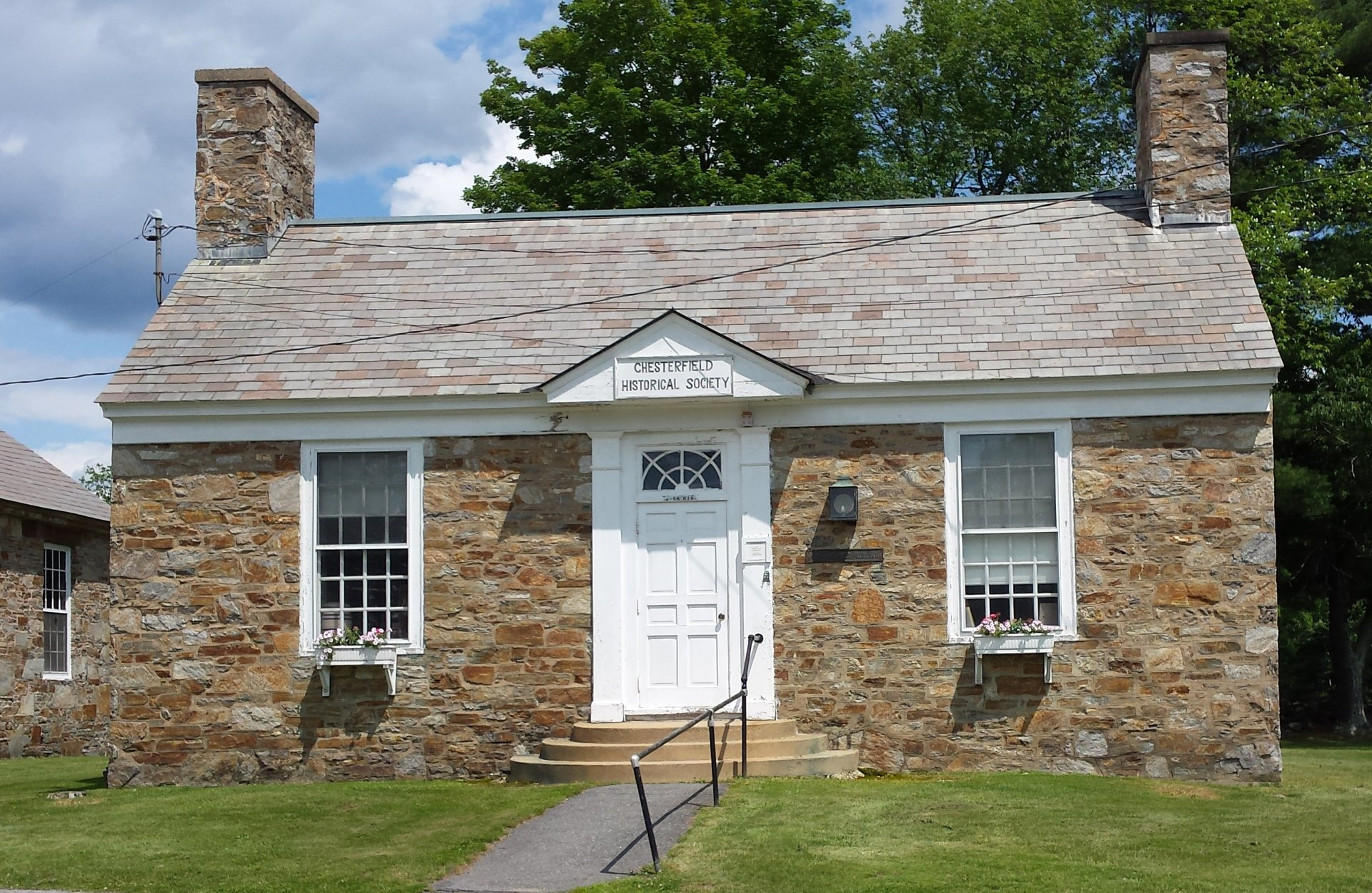Stone House Tavern Museum
What makes it a Unique Property
"The Pierce Tavern is an example of an urban-style tavern that displayed a full range of amenities and the most current architectural style despite its location outside of a village. The sophisticated style and construction of the building might be ascribed to the training and career of its builder. A Chesterfield native, Ezekiel Porter Pierce learned the carpenter and joiner’s trade in his youth, moving to Maine at the age of twenty-one to practice his craft and reportedly to engage in drafting and architectural design."
James L. Gavin, Report on the Pierce Tavern, March 13, 2019
(This report can be viewed at the CHS building)
Exekiel Pierce built his stone house to impressive in the popular Federal style. He was influenced by Asher Benjamin books, "The American Builder’s Companion" (1806) and "The Practical House Carpenter" (1830). The stone granite portion was constructed from locally quarried stone. The soapstone (steatite) edging stones, a rare material in NH, were cut by circular saw. This is the first time this technique has been documented in NH. Also, the fireplace inserts and hearths are made from soapstone. There are delicate details in the gables' Palladian windows and engraved in the soapstone around its doorways.
The first floor has a center hall dividing four rooms of equal proportion. One of the west side rooms is believed to have been the stagecoach entrance. The east side's two rooms have pocket doors to separate them. This allowed for one large or two different activities to take place. Opposite the main entrance way is a stairway leading to the second floor. These stairs lead to a hallway with two bedrooms on either side. These would have been considered the best accommodations. Also off the hall is a ballroom that runs the entire length of the front of the building. The ballroom was designed with two entrance doors, a fiddler’s (musician) stage, built-in benches along the outer walls, fireplaces on either end, a plastered low vaulted ceiling for its aesthetic and acoustical effects, and a spring floor to make dancing easier and less noisy for the downstairs folks. The chandelier pulley system is still hidden in the walls. All this survives today except the spring floor that was replaced with a wooden floor in the 1920s.
Above the ballroom is the gabled attic which contains a series of five cubicles. Each have box-like platforms containing boot holds (probably for chamber pots). Straw mattresses would be laid on the platforms to provide Spartan accommodations for the stage drivers, drovers, or travelers on a tight budget. The cubicles were designed with openings for cross ventilation from the gables windows. These openings still have their blown glass features. Originally this area was not heated.
The kitchen area is located in the original wooden building, two feet below the first floor of the Stone House addition. It still retains the large, open-hearth brick fireplace with a pivoting pot hanger for cooking, a bake oven, and wooden storage bin. The fireplace is connected to a "beehive" hot-water heating stove. Large kettles full of water would rest in the oversize openings on the stove's top. The heated water would be used in all the tavern's operations.
The Stone House basement is constructed of stone rubble, 3 - 4.5 feet thick. This is to support the massive weight of the four chimneys on the outer walls. These stones are laid as random rubble in a manner typical of early nineteenth-century foundation walls, and bedded or pointed in lime-sand mortar. All stones have been split to present a plumb interior face, but there is no evidence of chisel or drill marks, indicating that the stones were split by impact rather than with wedges. A cement floor was later added but it is far from water tight. There is a partial basement under the south end of the wooden ell with a narrow crawl space under remainder.ell.








